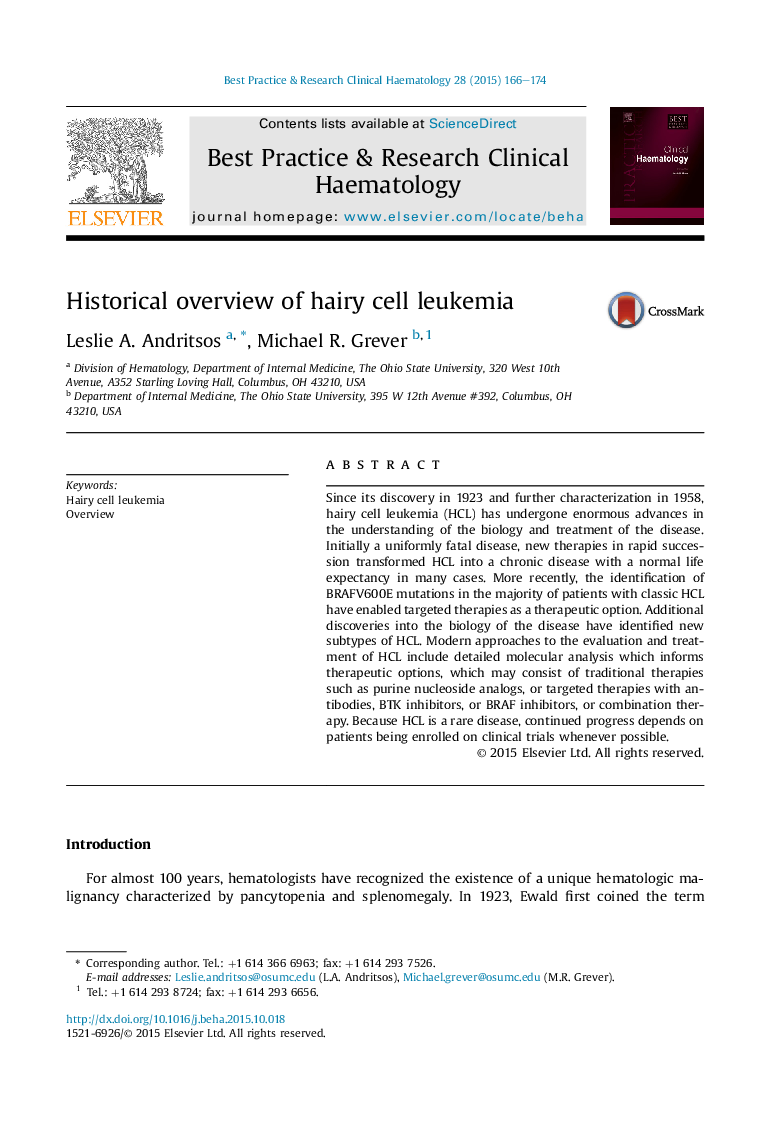| Article ID | Journal | Published Year | Pages | File Type |
|---|---|---|---|---|
| 5523939 | Best Practice & Research Clinical Haematology | 2015 | 9 Pages |
Since its discovery in 1923 and further characterization in 1958, hairy cell leukemia (HCL) has undergone enormous advances in the understanding of the biology and treatment of the disease. Initially a uniformly fatal disease, new therapies in rapid succession transformed HCL into a chronic disease with a normal life expectancy in many cases. More recently, the identification of BRAFV600E mutations in the majority of patients with classic HCL have enabled targeted therapies as a therapeutic option. Additional discoveries into the biology of the disease have identified new subtypes of HCL. Modern approaches to the evaluation and treatment of HCL include detailed molecular analysis which informs therapeutic options, which may consist of traditional therapies such as purine nucleoside analogs, or targeted therapies with antibodies, BTK inhibitors, or BRAF inhibitors, or combination therapy. Because HCL is a rare disease, continued progress depends on patients being enrolled on clinical trials whenever possible.
